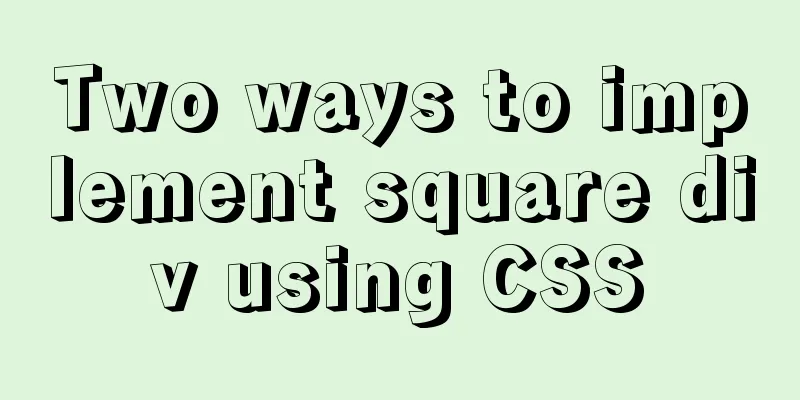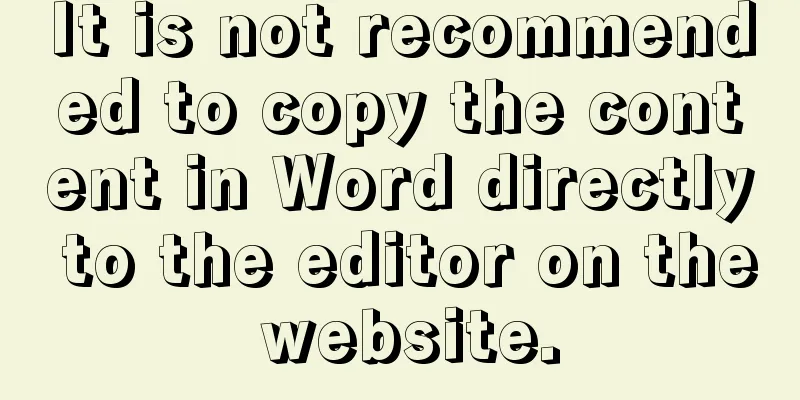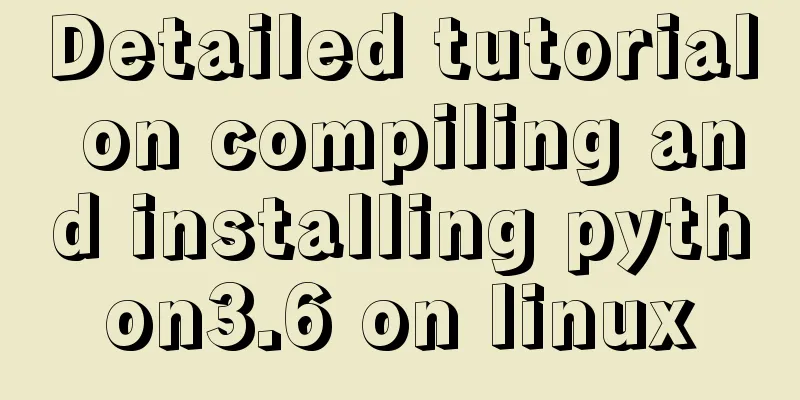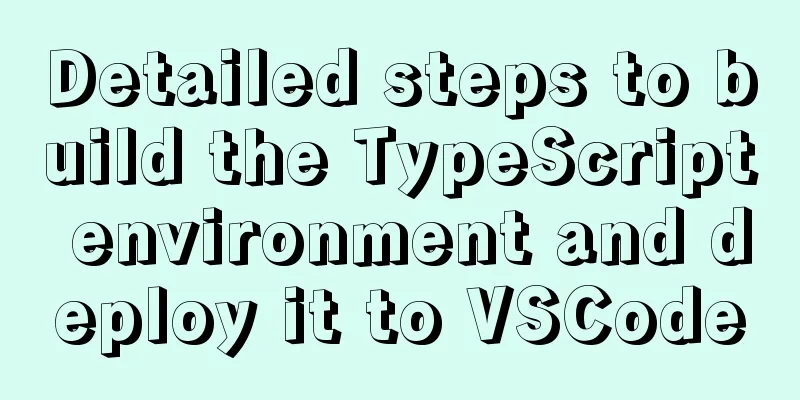What codes should I master when learning web page design?

|
This article introduces in detail some of the techniques that should be mastered in the process of learning web page production. It is best to learn and study these contents step by step and never skip them. However, the webmaster of 123WORDPRESS.COM recommends that new students can create a website as long as they master the first three items! They are: HTML, CSS and XHTML. At least there is no problem making a web page! This article only introduces some codes that you should master. If you want to realize exquisite web pages, you need to master some application skills of graphics software! If you want to develop interactive websites with complete functions, then you need to master some basic programming knowledge. If you have any questions, feel free to ask me! Thanks! HTML 4.01 HTML is the language of the Web, and every Web developer needs to have a basic understanding of it. HTML 4.01 is an important web standard that differs significantly from HTML 3.2. When tags like font and color attributes were added to HTML 3.2, it started to become a nightmare for developers. The process of developing websites where font information had to be added to every single page became a long and expensive ordeal. With HTML 4.01, all formatting information can be moved out of the HTML document and placed into a separate style sheet. Another reason why HTML 4.01 is important is because XHTML 1.0, the latest HTML standard, is HTML 4.01 reformulated as an XML application. Using HTML 4.01 in your pages ensures that HTML can be easily upgraded to XHTML in the future. Please make sure you are using the latest HTML 4.01 standard. Cascading Style Sheets (CSS) Styles define how HTML elements are displayed, similar to the role played by the font tag in HTML 3.2. Styles are usually stored in files outside of the HTML document. External style sheets give you the ability to change the look and layout of all the pages on your website simply by editing a simple CSS document. If you've ever tried to make a change, such as changing the font or color of all the page titles on your site at once, you'll understand how CSS can help you do more with less. XHTML - The Future of HTML XHTML refers to Extensible HyperText Markup Language. XHTML 1.0 is the latest HTML standard from the W3C. It became an official recommendation on January 26, 2000. W3C Recommendation means the stability of its specifications, and its specifications have now become a Web standard. XHTML is a reformulation of HTML 4.01 using XML and can be used immediately in existing browsers by following some simple guidelines. XML - A tool for describing data Extensible Markup Language (XML) is not a replacement for HTML. In future web development, XML will be used to describe and store data, while HTML will be used to display data. The most appropriate description of XML is that it is a cross-platform, hardware- and software-independent information storage and transmission tool. We believe that XML is as important as HTML is to the web, and that XML will become the most important tool for data processing and transmission. XSLT - a tool for users to transform data XSLT (Extensible Stylesheet Language Transformations) is a language used to transform XML. Future websites will have to deliver data in different formats to different browsers and to other web servers. XSLT is a new W3C standard for transforming XML data into different formats. XSLT can transform XML documents into a format that browsers can understand, such as HTML, or WML - a markup language used by many handheld devices. XSLT can also add elements, delete elements, rearrange and sort elements, test and determine which elements are displayed, and so on. Client-side scripting Client-side scripting is a type of programming that affects the behavior of Internet browsers. You should learn JavaScript so you can deliver more dynamic website content:
Server-side scripting Server-side scripting is related to Internet server programming. You should learn server-side scripting so that you can deliver more dynamic website content. Through server-side programming, you can: dynamically edit, modify, or add web page content respond to user queries or data submitted from HTML access data or databases, and return the results to the browser access files or XML data, and return the results to the browser convert XML to HTML, and return the results to the browser customize pages for different users and improve page usability provide security and access control for different web pages design different outputs for different types of browsers minimize network traffic Managing Data with SQL Structured Query Language (SQL) is the universal standard for accessing databases such as: SQL Server, Oracle, Sybase, and Access. Knowledge of SQL is extremely valuable for anyone who wishes to store and retrieve data from a database. Any web administrator should understand that SQL is a truly relevant engine for databases on the web. |
<<: MySQL Innodb key features insert buffer
>>: Summary of the differences between Html, sHtml and XHtml
Recommend
Detailed explanation of Js class construction and inheritance cases
The definition and inheritance of classes in JS a...
Ideas and codes for implementing waterfall flow layout in uniapp applet
1. Introduction Is it considered rehashing old st...
Sample code for implementing mobile expansion and collapse effects with pure CSS3
This article introduces the sample code for imple...
HTML meta viewport attribute detailed description
What is a Viewport Mobile browsers place web pages...
Rounding operation of datetime field in MySQL
Table of contents Preface 1. Background 2. Simula...
Pure CSS3 to achieve pet chicken example code
I have read a lot of knowledge and articles about...
Tutorial on reinstalling MySQL on Windows 64-bit (Zip version, decompressed version MySQL installation)
Uninstall MySQL 1. In the control panel, uninstal...
js implements the classic minesweeper game
This article example shares the specific code of ...
JavaScript canvas realizes dynamic point and line effect
This article shares the specific code for JavaScr...
Detailed explanation of the principle of creating tomcat in Eclipse
When creating a tomcat server on a local eclipse,...
JS implements a detailed plan for the smooth version of the progress bar
The progress bar is not smooth I believe that mos...
Detailed explanation of how to use WeChat mini program map
This article example shares the specific implemen...
Analysis of the usage of process control functions/statistical functions/grouping queries in MySql
The road ahead is long and arduous, but I will co...
How to use the vue timeline component
This article example shares the specific implemen...
Example of converting JavaScript flat array to tree structure
Table of contents 10,000 pieces of data were lost...









